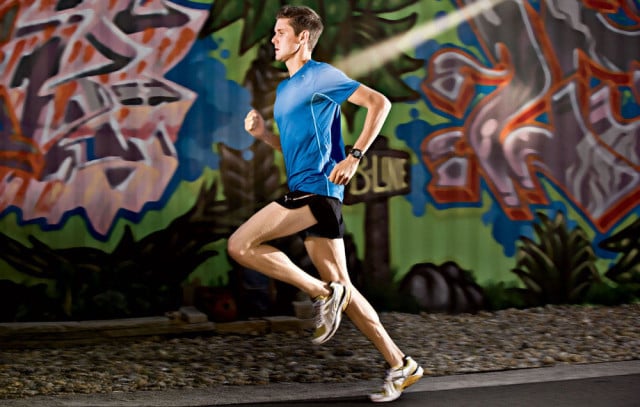Proper Pacing Will Make You a Better Runner
Use these tips to know how fast (or slow) you are running.
Use these tips to know how fast (or slow) you are running. – By Lisa Marshall
How fast are you running? Ask yourself midrun – no peeking at your GPS! – and chances are, you’ll get it wrong. Research shows that recreational runners overestimate or underestimate their pace by 32 to 40 seconds per 1.5km. And many assume that unless they’re training for a specific time goal, pace doesn’t matter anyway. It does, says Coach Ewen North, of US-based Revolution Running. “Even if you’re just out there to stay physically fit, being cognisant of pace can help you stay out longer and complete your run, so you get more endurance benefits.”
For those gunning for a PB or tackling a new distance, pacing is even more vital, says Carl Foster, Ph.D., an exercise scientist. Starting too fast can have disastrous physiological effects midrace, and finishing with too much in the tank can take a toll on ego and finishing time. “The objective at any distance is to run out of whatever you have to give one step beyond the finish,” Foster says. To do that, you have to know exactly how to pace yourself.
Ease in
What’s so bad about going out too fast? It depends on the distance, says Foster. In a 5K, you’ll flood your muscles with by-products of burning glucose faster than your body is able to clear them, forcing you to slow. Go out too fast in a warm 10K and you’ll boost your core temperature too soon, making the last kilometres miserable. In a half or full marathon, you’ll use up too much muscle glycogen early on, forcing your body to burn fat for fuel, which takes longer to convert to energy. Even during a training run, an overzealous start can leave you struggling to finish.
To avoid this, warm up. The shorter the event, the longer your warm up should be. For long runs, and half or full marathons, “warm up” by running the first kilometres slower than goal pace. Tell yourself: Choose to slow down now or be forced to slow down later.
Practice Different Paces
“A lot of people understand only two levels of pacing: Running as fast as they can or easy jogging,” North says. To get a sense of what different paces feel like, try this short workout: Warm up easy for 10 to 15 minutes. Then run 1.5km at marathon pace, four minutes at half-marathon pace, three minutes at 10K pace, and two one-minute segments at 5K pace, with 90 seconds of recovery jogging in between each interval.
Runners with a goal race should do workouts at their goal pace, says coach Jeff Gaudette, so they’ll know what to expect on race day. For instance, three to four weeks before a half or full marathon, do five to 10 1.5km repeats at goal pace with one minute recovery in between. Three weeks before a 5K or 10K, do 12 x 400 at goal pace with 30-second jogs in between. Your body will learn that the pace naturally feels easier early in the workout or race.
Train by Feel
While a GPS can be a helpful tool, the key to learning pacing is to listen to your body, says Gaudette. Glance at your watch every 800 metres max during a workout to see if you’re hitting your targets. In the meantime, pay attention to your breathing rhythm and ability to talk. In general, at marathon pace you’ll run at a 3:3 rhythm (three steps breathing in, three steps breathing out); at half-marathon pace, a 2:2 rhythm; and at 5K or 10K pace, a 1:2 or 1:1 rhythm. You can always use the talk test: “At marathon pace you should be able to talk in full sentences,” says Gaudette. “For a half you could probably get out one long sentence. For a 5K or 10K you can only blurt out a few words.”
Stay on it
If you tend to slow down midrun, bring your focus back to the task at hand. Foster points to research that looked at what marathoners think about midrace. “The good runners are attending to their bodies, looking at how all their different systems are doing, whereas the less-good runners zone out, and when they wake up, they realise they could be running faster.” After you’ve eased into your pace midrace, ask yourself at each kilometre marker: Does this feel harder or easier than I expected? Can I sustain this pace? Adjust accordingly. If you realise you went out too fast, all is not lost. In a 5K or 10K, “muscle through and run every remaining kilometre as fast as you can,” says Blackford. If it’s a half or a full marathon, back off for two or three kilometres, assess how you feel, and re-evaluate your goal.
READ MORE ON: training




